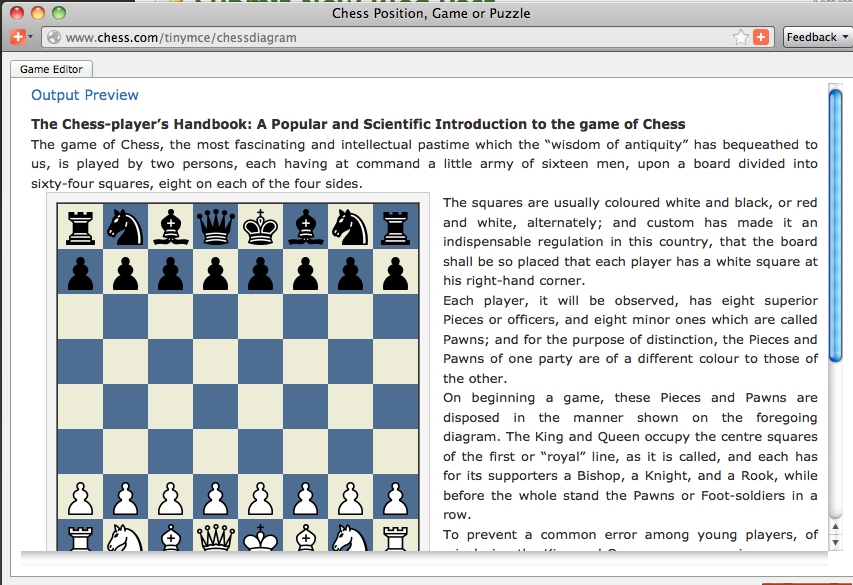

I used it more then a dozen years ago, but I've lost track of it - so I don't know if Google-hits I get now are for the same program, or if it even works on modern Windows releases.

The Colophon near the beginning discusses the different iterations the original text went through before finding its way to that website. The best location to read the original text transformed into a web-optimized format is at this link. It contains a specification and copious examples. It was called CDB, and written by Peter Klausler. The PGN (Portable Game Notation) format has its origins in a text document from 1994. There used to be a chess database program (on Windows) that allowed illegal moveĮntry. That any PGN-reading tool will accept the resulting files, and display it any more. While you are able to add illegal moves to a PGN file, you can't be certain Hope that illegal moves are relatively rare in games worthy of The PGN files where moves are placed) says:īecause illegal moves are not real chess moves, they are not permitted The PGN specification, section 8.2 (which describes movetext section: the section of It may sound insulting - but it's actually in the specification of PGN) PGN was designed for games that are worth recording. Illegal moves in game scores under certain conditions. PGN was not designed for games that are played according to FIDE rules, which do allow Paste in your PGN, or upload from your hard drive. What is a PGN file Text-based file format used to record moves in a chess match also includes the event name, location, date, round, player names, and result of the game. If FEN is present, a setup tag pair is mandatory.I'm very late to this question, but I think I have something to add: Online pgn viewer that can be used to view single or multiple games stored in a pgn file. These are Annotator, Pl圜ount, TimeControl, Time in HH.MM.SS format, Termination, Mode and FEN if the initial board setup is for a already started game. Symbol * is used to define if it is an ongoing chess match. Result - defines result of the game in the format white score - black scoreġ is used to define win and 0 is used to define loss and 1/2 is used for defining draw of the match.Black - defines name of the black player in Lastname, Firstname format.White - defines name of the white player in Lastname, Firstname format.Round - defines round of the game in the event.If date is not known, a double question mark will be present Date - defines the date of the match in YYYY.MM.DD format.Site - Defines physical location of the match in the form of city, region country format.Event - Defines the name of the match or event.Seven tag roaster is mandatory for every pgn and remaining tags are optional Seven tag roaster The tag value is enclosed in a double quotes “”. Each tag pair has a tag name and tag value. Each tag pair is defined in a opening and closing brackets. The tag pairs section consists of several tag pairs.
#WHAT IS PGN CHESS PDF#
Steven edwards devised the format for PGN in 1933.ĭownload the large size pdf file of this infographics on PGN at the chess PGN chart page.Įach PGN has two distinct fields. This PGN can be read by humans as well as most of the chess engines.
#WHAT IS PGN CHESS PORTABLE#
Portable Game Notation or PGN is the format used to store details of a chess game in a text file. Detailed explanation of fen is given here. Fen is used to define a status of a chess game and PGN is used to define the entire game from beginning. They are Forsyth-Edwards Notation (FEN) and Portable Game Notation (PGN). Two chess notations are primarily available.


 0 kommentar(er)
0 kommentar(er)
